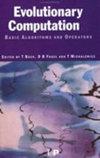Landscape Analysis for Surrogate Models in the Evolutionary Black-Box Context
IF 3.4
2区 计算机科学
Q2 COMPUTER SCIENCE, ARTIFICIAL INTELLIGENCE
引用次数: 0
进化黑箱背景下的代用模型景观分析
对于目标函数评估成本高昂的黑箱优化任务而言,代用模型已成为一种有价值的技术。在本文中,我们针对昂贵的连续黑箱任务,研究了在使用最先进的优化器 "协方差矩阵适应进化策略(CMA-ES)"进行进化优化过程中,代用模型的预测精度、代用模型的设置和黑箱函数景观特征之间的关系。本研究旨在通过探索景观特征与模型误差之间的关系,为选择和调整代用模型的特定规则和自动化方法奠定基础,重点关注每一代中特定模型的行为,而不是一开始就选择特定算法。我们执行了一个特征分析过程,识别了大量非稳健特征,并对类似的景观特征进行了聚类,最终从 384 个特征中选择了 14 个特征,这些特征随输入数据选择方法的不同而变化。我们的分析探讨了四种模型在 39 种设置下的误差依赖性,利用了三种输入数据选择方法,这些数据来自比较连续优化器框架内无噪声基准上的代用辅助 CMA-ES 运行。
本文章由计算机程序翻译,如有差异,请以英文原文为准。
求助全文
约1分钟内获得全文
求助全文
来源期刊

Evolutionary Computation
工程技术-计算机:理论方法
CiteScore
6.40
自引率
1.50%
发文量
20
审稿时长
3 months
期刊介绍:
Evolutionary Computation is a leading journal in its field. It provides an international forum for facilitating and enhancing the exchange of information among researchers involved in both the theoretical and practical aspects of computational systems drawing their inspiration from nature, with particular emphasis on evolutionary models of computation such as genetic algorithms, evolutionary strategies, classifier systems, evolutionary programming, and genetic programming. It welcomes articles from related fields such as swarm intelligence (e.g. Ant Colony Optimization and Particle Swarm Optimization), and other nature-inspired computation paradigms (e.g. Artificial Immune Systems). As well as publishing articles describing theoretical and/or experimental work, the journal also welcomes application-focused papers describing breakthrough results in an application domain or methodological papers where the specificities of the real-world problem led to significant algorithmic improvements that could possibly be generalized to other areas.
 求助内容:
求助内容: 应助结果提醒方式:
应助结果提醒方式:


